Cities face unprecedented challenges. Global environmental change is placing increasing pressure on ecosystem functions and their ability to support human activities. The exponential growth of human activities is a key driver of such change, so much so that Planet Earth has certainly entered a new Epoch—the Anthropocene, in which humans have as much influence as nature itself (Steffen et All 2007).

Urban regions pose enormous challenges to ecological and human well-being from local-scale atmospheric and water pollution to global-scale phenomena such as climate change threatening ecosystem’s capacity to deliver important ecological services (Alberti 2010). At current rates of urban growth, expected global land cover change will result in significant loss of habitats in key biodiversity hotspots (Seto et al. 2012). Urban regions are also the place where the majority of the human population will face the potential consequences of expected irreversible changes in climatic, hydrological, and ecological regimes such as flooding, droughts, sea level rises (Figure 1).
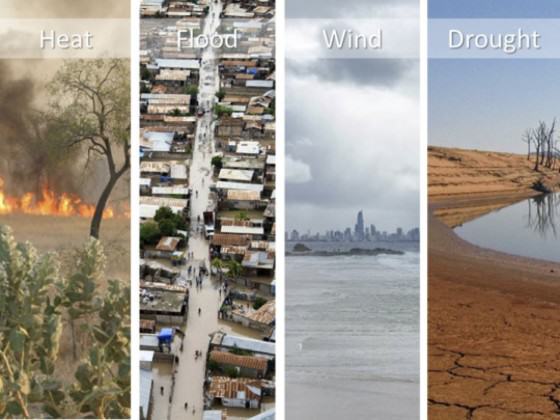
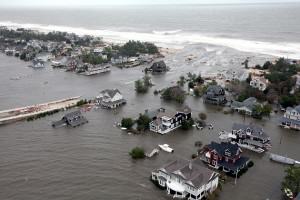
Rapid modifications of biophysical systems have the potential to trigger regime shifts (see below)—abrupt and irreversible changes—that will have significant consequences for human health, access to resources, human safety, security, and overall human wellbeing (Rockström et al. 2009). Researchers have found that the likelihood of regime shifts is higher in ecosystems where humans have reduced their resilience by modifying biogeochemical cycles, altering hydrological regimes, reducing biodiversity, and changing the magnitude, frequency, and duration of disturbance regimes (Folke et al. 2004). Potential regime shifts—from climate change and flooding to water pollution—pose enormous challenges to the stability of urbanizing regions and make them vulnerable (Miller et al. 2010). The recent Hurricane Sandy and the less recent but tragic Katrina, along with the Japanese tsunami, clearly illustrate the unexpected shocks cities face in the next decades.
How can cities navigate through such uncertainty and make robust decisions to ensure human wellbeing over the long term?

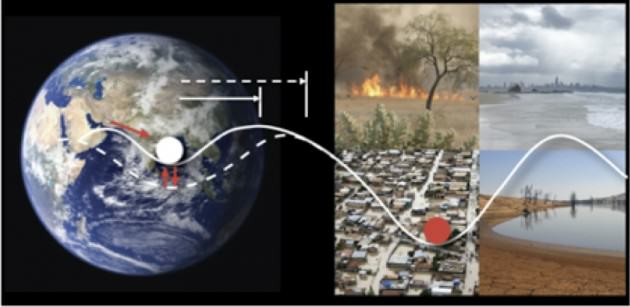
The Challenge
At the core of the challenge we face is the inevitable uncertainty of dynamic coupled human-natural systems (Liu et al. 2007). Both ecosystems and societies experience continuous fluctuations in their structure and function. Occasionally, change is punctuated by sharp shifts: abrupt transitions to an alternative state with significant implications for system function and dynamics (Scheffer et al. 2001, Scheffer et al. 2012). Scientists have documented examples of regime shifts for quite some time. More recently they have described several examples in urbanizing regions (i.e. urban lakes, invasive species, floods), but we still do not fully understand the significance of such dynamics.
Urban ecosystems are highly complex. Change and evolution in such systems emerge as interacting agents engage in simple behaviors. Uncertainty and the likelihood of surprise are driven by the complex interactions among ecological and social drivers and their unpredictable dynamics (Alberti 2008). In urban ecosystems feedback mechanisms that operate between ecological and human processes can amplify or dampen changes, and thus regulate the system’s response to external pressures. For example, land cover change and rapid loss of tidal marshes coupled with the hydrological and ecological changes associated with the development of hard flood control structures (e.g., dikes, dams, levees, groins, seawalls, and storm water) increase system vulnerability to extreme climate events and prompts more demand for flood-control infrastructure.
Extreme Climate Events
All around the world, extreme climate events are becoming normal when compared to historical records. Climate scientists predict more frequent hot days, heavy precipitation, high-speed winds, and a likely increase in hurricanes (in the United States and the Caribbean) and flash floods (e.g. in East Africa), with significant consequences for human and ecological wellbeing (figures below, IPCC 2012). Economic losses from climate-related disasters have increased, with large variations across places and years (below, IPCC 2012). Global losses due to the weather- and climate-related disasters reported over the last few decades mainly reflect the monetized direct damages to assets, and are not distributed equally. Since 1980, estimates of annual losses have ranged from a few billion US dollars to over $200 billion (in 2010 dollars), with the highest value for 2005, the year of Hurricane Katrina (IPCC 2012).
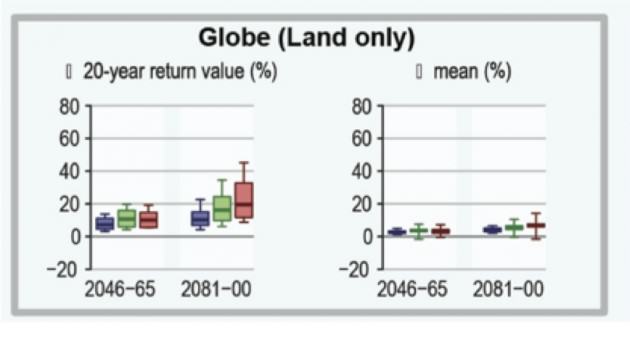
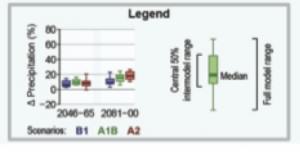 For a recent IPCC special report, ‘Managing the Risks of Extreme Events and Disasters to Advance Climate Change Adaptation’ (SREX), 220 scientists collaborated for 30 months, looking at historical trends and projected trajectories to assess current frameworks and strategies. Their report points out that existing measures for managing risk and adapting to change need to be improved dramatically to face projected extremes.
For a recent IPCC special report, ‘Managing the Risks of Extreme Events and Disasters to Advance Climate Change Adaptation’ (SREX), 220 scientists collaborated for 30 months, looking at historical trends and projected trajectories to assess current frameworks and strategies. Their report points out that existing measures for managing risk and adapting to change need to be improved dramatically to face projected extremes.
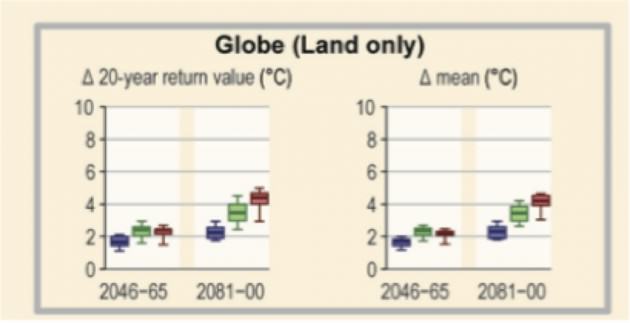
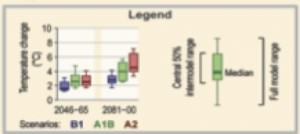 When multiple phenomena with uncertain trajectories—for example, storm surges and power outages—affect the function of cities simultaneously, the element of surprise can be enormous. Suddenly, resources and activities that everyone takes for granted, such as mobility or an energy supply, are unavailable, causing ripple effects on people’s safety and wellbeing.
When multiple phenomena with uncertain trajectories—for example, storm surges and power outages—affect the function of cities simultaneously, the element of surprise can be enormous. Suddenly, resources and activities that everyone takes for granted, such as mobility or an energy supply, are unavailable, causing ripple effects on people’s safety and wellbeing.
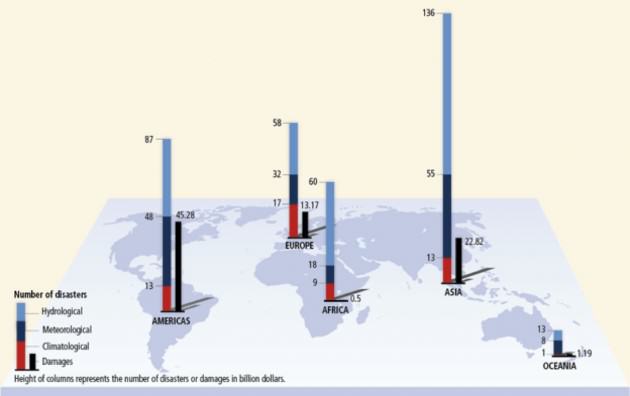

Climate scientists did predict that given the expected increase in extreme events such as hurricanes, the subway tunnels in New York could flood as they did during Hurricane Sandy, but far less predictable were the many interactions with rail and road closures and the potential consequences of the shifting mobility patterns of thousands of city dwellers, especially since power outages and other system failures were simultaneously limiting the access to food supplies and drinking water.

By 2030, many coastal cities are likely to face raising waters at least 4 feet above the high-tide line due to storm surges and sea level rise (Climate Central 2012). A recent report by Strauss et al. (2012) estimates that urban areas and their communities are highly vulnerable to sea levels rising anywhere from 0 to 6 m above mean high tide. They found important threat levels: 22.9 million Americans live on land within 6 m of the local mean high tide.
The future of Planning
Strategic decisions about urban infrastructure and growth management are based on our assessment of the past and our expectations for the future. How we think about the future has significant implications for the choices we make and the decision-making process we apply. Traditional approaches to planning and management typically rely on predictions of probable futures extrapolated from past trends.
However, long-term trends are increasingly unpredictable given the complexity anduncertainty of coupled human-natural systems. Predictive models that are designed to provide accurate assessments of future conditions can only account for some of the interactions between highly uncertain drivers of change and the surprising, but plausible, futures over the long term. Important progress has been made in complex modeling, and improved simulation and computer power have allowed us to process quite astonishing amounts of data; still, our models are constrained by our limited knowledge, unverified assumptions, and short-sighted mindsets.
Myths in Planning
To address the inherent uncertainty of coupled human-natural systems, we need to expose some common myths in urban planning. I expand the discussion of the myths in a chapter in my forthcoming book Cities as Hybrid Ecosystems (2014).
Stability: Thresholds remain constant over time, and thus are predictable.
Planners have long assumed that systems are stable: that they return to equilibrium when confronted with external disturbances. Steady state is a condition in which nature exists at or near a persistent equilibrium. The steady-state paradigm holds that disturbance can be controlled and that by using an optimization strategy, systems can achieve sustainable carrying capacities. Within this perspective, thresholds that would produce change to a new state (i.e., a different equilibrium) remain constant over time, and are predictable and avoidable.
But this isn’t the case. Coupled human natural systems may exhibit nonlinear responses to perturbations. There can be more than one stable regime. Both the position of a threshold along a driving variable and the depth of the basin of attraction can change. Resilience is a dynamic property. In coupled human natural systems such as cities, reciprocal influences between system shifts in both the ecological and social systems may occur (Walker and Meyers 2004)
Optimality: There is an optimal resilient urban pattern and type of infrastructure.
The idea of optimality—that one can find the optimum among a set of possible alternatives given a set of conditions—is a direct consequence of the steady-state paradigm. Planners come to assume that an optimal solution exists. Decisions based on seeking the optimum assume that we can quantify risks. However, in the presence of irreducible uncertainties, we encounter multiple plausible futures whose relative probabilities are unknown. The farther we look into the future, the more the uncertainty increases—and it may increase even more with new understanding from advancement in scientific research. For systems to function in an uncertain environment, robustness rather than optimality is a more appropriate target for planning and decision-making.
Transferability: What is resilient in one region and at one scale is resilient in other regions and at other scales.
Many planning strategies are based on the assumption that what is resilient for a specific system function, at one scale, and in one region, is resilient for other functions, at other scales and in other regions. In complex social-ecological systems, multiple regime shifts may occur in multiple biophysical (climate, hydrology, biogeochemistry) and human (social, economic, and political) domains at multiple scales. Furthermore in evolving systems, changes in scale influence resilience (Walker and Meyers 2004). Increasing the scale of urban systems may expand resilience by adding a diversity of ecosystem types, they depend upon, but urban expansion may increase the relative costs and impacts of maintaining urban activities on a larger scale. If planners focus on the resilience of a specific subsystem, at a specific scale, that may cause the system to lose resilience in other ways. Instead, to maintain resilience we must focus on maintaining adaptive capacity and coping with uncertainty.
Adaptability: We can maintain resilience by adapting our current institutional frameworks.
Human and natural systems have evolved through change, adaptation, and extinction. But researchers in separate domains have studied of how human systems and natural systems adapt. As a result, we do not fully understand how coupled human-natural systems evolve and adapt and what the limits are to their adaptability. Adaptation planners are assuming that we can maintain resilience by adapting our current institutional frameworks. In fact a co-evolving paradigm may require reconfiguring current planning frameworks and fundamentally transforming current institutions for managing our cities.
The Myth of a Resilient Urban Pattern
Evidence that urban planning subscribes to such myths is provided by the dominant idea and search in planning for an optimal resilient pattern of urbanization. The idea of an “optimal pattern” is based on the assumptions that thresholds remain constant over time, that they can be detected and predicted, and that what is resilient in one region and at one scale is resilient in other regions and at other scales. Furthermore, adaptation planning is grounded in the idea that we can maintain resilience by adapting our current institutional frameworks.
Building on the emerging evidence in urban ecology, I challenge the hypothesis that a shift in the pattern of urbanization toward a single “optimal” pattern is a desirable objective that will ensure resilience (Alberti, forthcoming). I argue that no single pattern is consistently more resilient than another. Resilience depends on variable biophysical and socio-economic conditions across regions and scales. Optimizing one function at one scale may increase the vulnerability of the whole system.
In my new book Cities as Hybrid Ecosystems, I advance the hypothesis that to enable resilience, it may be necessary to create a diversity of urban patterns within and across urbanizing regions.
Resilience in Urban Ecosystems
The resilience paradigm recognizes the existence of multiple stable states and focuses on adaptation as a strategy to maintain system function. Resilience is the capacity of a system to absorb disturbance and reorganize while undergoing change so it can retain essentially the same functions, structures, identity, and feedbacks (Holling 1973). In coupled human-natural systems, resilience emerges from the interactions of human and ecosystem drivers, patterns, processes, and functions (below).
My colleague John Marzluff and I together with my team at the Urban Ecology Research Lab (UERL) are currently working toward a new transdisciplinary network to advance scientific understanding of regime shifts, resilience and adaptation in urban ecosystems. This network aims to inspire, generate, and facilitate new modes of interaction and collaboration among diverse members of the scientific communities and practice to produce a new level of synthesis of existing knowledge, identify research priorities, and establish new empirical evidence on the relationships between ecological resilience and human wellbeing in urbanizing regions.

Evidence emerging from the study of complex systems can provide insights for planning and management. In a recent paper in Science, Sheffer et al. (2012) suggest that system shifts may result either from unpredictable external shocks or from critical transitions. Drawing on two separate lines of investigation—on complex networks and on the proximity of critical thresholds—they suggest that both the heterogeneity of the components and their connectivity affect the stability of systems on the long run. By building on such observations in ecological systems, we can develop hypotheses about the fragility and robustness of coupled human-natural systems and test them in urban ecological systems.
Patterns of Resilience
I suggest that the diversity of urban patterns (e.g., centralization, building density, road connectivity) may control the resilience of urbanizing regions, because it is the diversity of processes alternative patterns can support that expands the region’s capacity to adapt to a variety of conditions that can emerge in the future (Alberti, forthcoming). In the most recent examples of extreme climate events that have tested the resilience of large urban regions across the world, the greatest surprises are in what worked: the countless ways in which unintended functions and flexibilities created by an imperfect and redundant urban infrastructure (i.e., transportation systems) provided alternatives and ways out. When the subway floods unexpectedly and shuts down for a week, many interconnected activities will jolt, and mobility patterns will shift suddenly. It is under these circumstances that we come to see how heterogeneous and modular the city networks and systems actually are. Examples are provided by the power of real-time communication technology such as cell phone networks, by on-line retailers’ delivery systems, and by the redundancy and flexibility of multiple transportation and infrastructure systems.
Critical transitions pose great challenges and opportunities. Innovation and creativity are important ingredients of resilience; at the same time they are often triggered by the same forces that drive critical transitions (Allan et al. 2010). Critical transitions offer unique opportunities for positive transformation and generate he seeds for cities to become more resilient and innovative. When new frames of reference and new constraints emerge, they require people and planners to see opportunities and risks they have never experienced before. Such new frameworks highlight problems and unequal distributions, and expose tradeoffs and synergies; thus they expand the boundary conditions of what is possible and desirable.
From Resilience to Transformation
Resilience is about avoiding system shifts. But persistence is not always desirable. Many undesirable states, such as degraded ecosystems or social inequalities, may be quite resilient. So while resilience planning focuses on predicting and adverting potential thresholds and system shifts, moving towards a desirable state requires transformation (Walker et al. 2004).
Resilience in coupled human-natural systems requires transformation towards what is desirable (Folke et al. 2010, Ernston et al. 2010). This implies addressing the diversity of human values and the existence of conflicts. A co-evolving paradigm may be more appropriate. This view focuses not only on unpredictable dynamics in ecosystems, but also on institutional and political flexibility for learning, reconfiguring problem solving frameworks, and devising innovative policies. Instead of seeking to reduce uncertainty, planners and decision makers will need to identify and adopt robust strategies that will be appropriate under a broad range of alternative futures.
Future policies and management practices will succeed or fail based on their ability to take into account the complexities and uncertainties of these systems. When policies aim to stabilize the ecological system or eliminate its variability, the inevitable outcome is collapse (Carpenter and Gunderson 2001). This is where scenario building can be valuable, as both a systemic method and a framework to expand our ability to think creatively about the future by focusing on complexity and uncertainty (Peterson et al. 2003). Rather than focusing on accurately predicting a single outcome, scenarios let us examine the interactions between various key uncertain factors that will together create alternative futures. Using a series of hypothetical future scenarios, we can assess the robustness of alternative strategies.
Local governments need to make important decisions about land use management and investments in infrastructure that can influence the direction of urban development in the near future.
I suggest five principles for planning under uncertainty towards enabling resilience and innovation in urban ecosystems (Alberti, forthcoming):
- Create and maintain diverse development patterns that support diverse human and ecosystem functions
- Focus on maintaining self-organization and increasing adaptation capacity instead of aiming to control change and to reduce uncertainty.
- Expand the consideration of uncertainty and surprise by designing strategies that will be robust under the most divergent but plausible futures.
- Create options for learning through experiments, and opportunities to adapt thorough flexible policies and strategies that mimic the diversity of environmental and human communities.
- Expand the capacity for change through transformative learning by challenging assumptions and actively reconfiguring problem definition and policy action.
Marina Alberti
Seattle, Washington USA










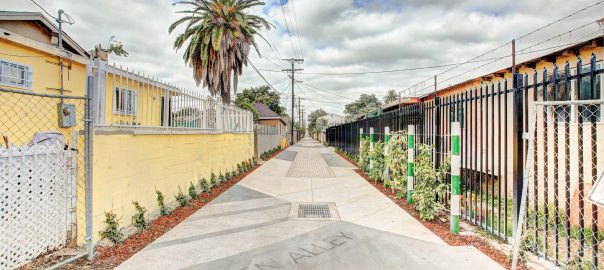

Green city is much important for our health as well as our planet. Urban planners develop the strategy that is Eco friendly to develop the town.